1. New Orleans, Louisiana
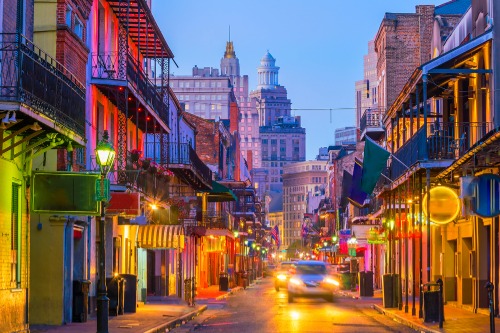
New Orleans has long been known for its vibrant culture, jazz music, and distinctive architecture. However, the city faces several challenges that could contribute to its gradual decline. The devastation caused by Hurricane Katrina in 2005 left lasting scars on the city, both physically and economically. While the city has seen significant recovery in certain areas, many neighborhoods are still struggling.
Rising sea levels and the threat of future hurricanes pose a significant environmental challenge to New Orleans’ survival. The city’s geographic location makes it particularly vulnerable to flooding, and the cost of maintaining and upgrading its infrastructure is astronomical. As younger generations move to other cities for better opportunities, New Orleans faces a potential brain drain, Axios reports. If climate change continues to worsen, and if the city cannot address its long-term environmental challenges, New Orleans may face a future where large sections of the city become ghost towns by 2040.
2. Detroit, Michigan
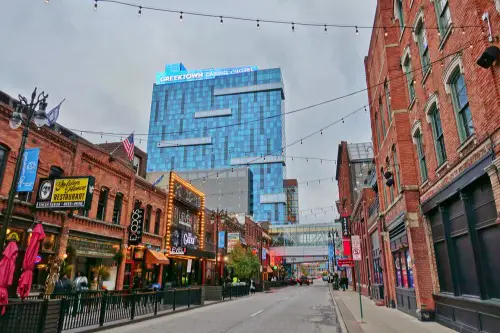
Detroit is perhaps the most iconic example of a city grappling with severe population decline and economic hardship. Once the proud heart of the American automotive industry, Detroit thrived during the early 20th century. Millions moved here to work in booming factories, and the city symbolized the American Dream for countless families. However, the manufacturing decline in the latter half of the century started a cascade of challenges. According to CBS News, between 1950 and 2020, Detroit’s population plummeted from 1.8 million to just over 600,000, leaving entire neighborhoods abandoned.
As families moved away, Detroit’s tax base eroded, crippling the city’s ability to provide essential services like public safety, infrastructure maintenance, and education. Vacant lots and shuttered schools are now common sights. Revitalization efforts, such as new small businesses and art spaces, show promise, but progress is slow, and much of the city’s core remains in disrepair. Experts worry that without a major economic resurgence, Detroit could further depopulate, pushing it closer to ghost town status by 2040. The spirit of Detroiters remains strong, but systemic change is desperately needed.
3. Cleveland, Ohio
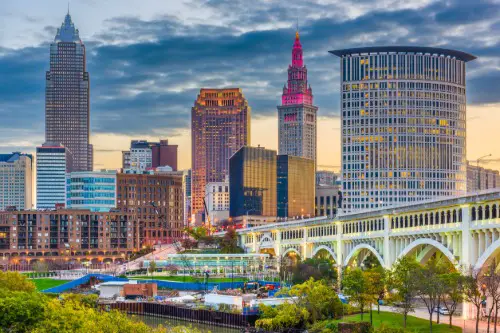
Cleveland, often referred to as “The Forest City,” tells a familiar tale of economic transformation and urban decline. Once a manufacturing powerhouse, Cleveland thrived during America’s industrial heyday. Its location along Lake Erie and proximity to major waterways made it a transportation hub. However, deindustrialization hit Cleveland hard, leading to mass layoffs and the collapse of major industries. Over the decades, residents began leaving in search of better opportunities elsewhere, according to Cleveland.com.
Today, Cleveland faces high vacancy rates, crumbling infrastructure, and one of the nation’s highest poverty rates. Some neighborhoods have seen impressive revitalization, particularly in the downtown and University Circle areas. However, large swaths of the city remain blighted and underdeveloped. Without significant investment in job creation and infrastructure repair, Cleveland risks becoming a patchwork of thriving districts surrounded by vast, empty areas. Experts predict that the city’s population could drop even further by 2040 if these challenges go unaddressed.
4. St. Louis, Missouri
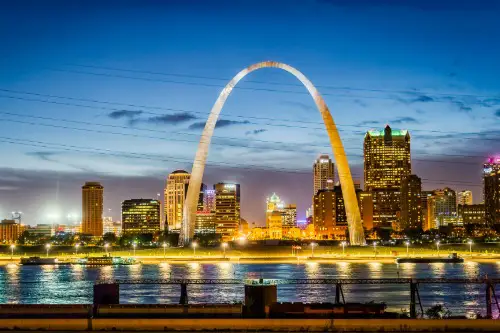
St. Louis was once a thriving center of commerce and culture in the Midwest, with a population exceeding 850,000 at its peak in the mid-20th century. Over the decades, though, suburbanization and economic shifts caused the city to lose more than half its residents. Many people left for the surrounding suburbs, draining the city of much-needed tax revenue and leaving behind vacant homes and buildings.
The city faces significant challenges, including crime, economic disparity, and struggling public schools, which make it less attractive to potential newcomers, according to St. Louis Public Radio. Efforts to revitalize downtown St. Louis, including new stadiums and cultural attractions, have helped in small ways, but the overall population trend remains downward. Environmental issues, such as flooding risks along the Mississippi River, add another layer of concern. Without aggressive action, experts warn St. Louis could face further depopulation and economic stagnation, making it a prime candidate for ghost town status by 2040.
5. Camden, New Jersey
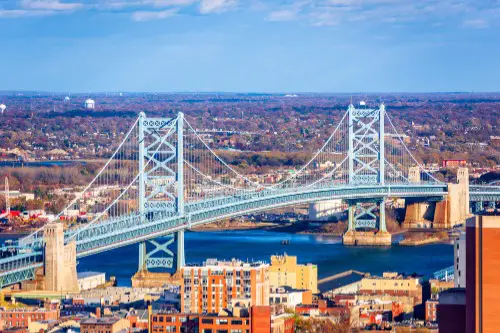
Once a bustling industrial city, Camden’s fortunes took a sharp downturn in the latter half of the 20th century. The city’s proximity to Philadelphia made it a prime location for manufacturing, but as factories closed and the economy shifted, Camden struggled to keep up. By the 1990s, the city became infamous for its high crime rates and widespread poverty, and its population has dropped significantly ever since, according to Asbury Park Press.
Camden’s poverty rate remains one of the highest in the nation, with many residents living in abandoned houses and neglected neighborhoods. While some revitalization efforts, such as new development along the waterfront, have brought limited success, the city faces deep structural problems that are difficult to overcome. With a shrinking tax base and limited job opportunities, Camden could continue its downward trajectory, potentially becoming a shadow of its former self by 2040 if real economic transformation does not occur.
6. Flint, Michigan

Flint’s fall from prosperity is tied directly to the decline of the American auto industry. Once home to General Motors’ largest manufacturing plants, Flint thrived for decades. However, as GM closed plants and outsourced jobs in the 1980s and 1990s, Flint’s economy collapsed. The loss of jobs was devastating, and many residents left the city in search of work, causing the population to shrink dramatically.
The Flint water crisis, which began in 2014, added an extra layer of devastation to an already struggling city. The environmental disaster caused widespread health problems and further eroded public trust in the city’s leadership. Despite some recovery efforts, Flint continues to face deep challenges, including high crime rates and widespread poverty. Unless Flint can find a sustainable way to revitalize its economy, its future remains bleak, and it could very well become a ghost town by 2040.
7. Gary, Indiana
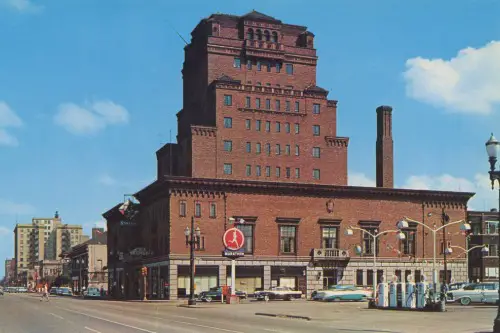
Gary, once a thriving steel town, is now one of the most iconic examples of post-industrial decay. The city’s peak population was over 178,000, fueled by its thriving steel industry. However, as the steel industry declined in the 1970s and 1980s, Gary’s economy collapsed, and the population began to dwindle. Today, the population has dropped by over 50%, and many parts of Gary are now deserted.
The city struggles with widespread poverty, unemployment, and high crime rates. While there have been efforts to revitalize the area, including plans to redevelop vacant industrial sites, the challenges are immense. Gary’s dependence on a single industry left it vulnerable to economic shifts, and without major diversification and investment in new industries, the city faces a bleak future. By 2040, if trends continue, Gary may find itself struggling to survive, with large swaths of land lying vacant and abandoned.
8. Birmingham, Alabama
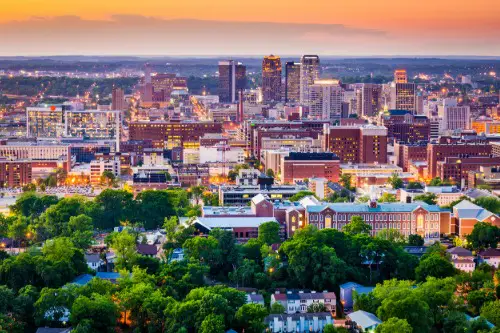
Birmingham, once known as the “Magic City” for its rapid growth during the iron and steel boom, has seen its fortunes wane over the decades. The decline of heavy industry in the region left the city struggling to redefine its economic identity. While healthcare and education have emerged as new economic drivers, Birmingham’s population has been shrinking for decades as residents migrate to suburbs or larger metropolitan areas.
Blight has become a growing problem, with hundreds of abandoned homes and commercial properties scattered across the city. Additionally, systemic issues like racial and economic inequality exacerbate Birmingham’s challenges. While efforts to revitalize downtown have seen some success, they haven’t reached many of the city’s struggling neighborhoods. Experts warn that without broader investment and population retention strategies, Birmingham could face significant decline by 2040, potentially joining the ranks of ghost towns despite its rich history and cultural legacy.
9. Buffalo, New York
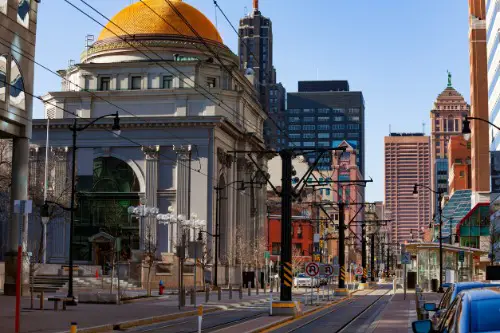
Buffalo, once a booming industrial hub, has experienced a steady decline in population and economic vitality over the last several decades. The city’s heavy reliance on industries like steel manufacturing, which left as companies moved overseas, led to widespread job loss and economic stagnation. Despite some revitalization efforts in the downtown area and new growth in sectors like healthcare and education, Buffalo has been unable to fully recover from its industrial collapse.
The city’s population has shrunk by over 50% since the 1950s, and vacant homes and abandoned buildings are now common sights in many neighborhoods. While certain neighborhoods and the waterfront have seen redevelopment, the city struggles with poverty, unemployment, and a lack of major new industries. Without a drastic change in economic policy and population retention strategies, Buffalo could continue its downward spiral toward becoming a ghost town by 2040.
10. Syracuse, New York
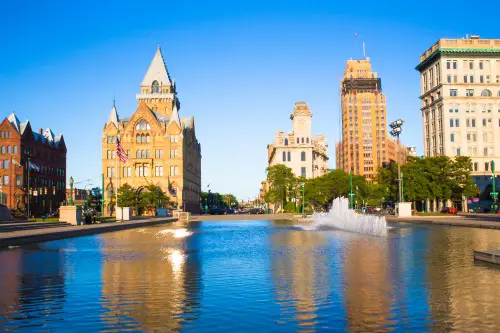
Syracuse, like many rust belt cities, was once the epicenter of industry and commerce. It was known for its salt production, as well as manufacturing and agriculture. However, as industries closed and the economy shifted in the latter half of the 20th century, Syracuse experienced significant population loss. The city’s manufacturing sector took a severe hit, and the economy has struggled to diversify since.
Today, Syracuse faces a declining population, an aging workforce, and high poverty rates. Many parts of the city are experiencing urban decay, and vacant homes and businesses are common. Although efforts to revitalize the city have yielded some results, they have not been enough to stem the broader trends of out-migration and economic stagnation. If these trends continue, Syracuse could become another small city on the brink of becoming a ghost town by 2040.
11. Stockton, California
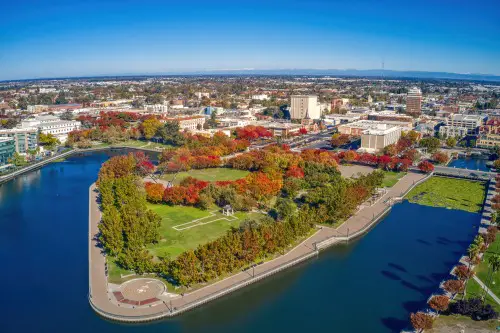
Stockton, once heralded as one of the fastest-growing cities in California, has faced a series of setbacks that have left its future uncertain. In the 2000s, the city became a symbol of the housing crisis after a massive housing bubble burst, causing widespread foreclosures. The city filed for bankruptcy in 2012, becoming the largest city in the U.S. to do so at the time. Though Stockton has made strides in rebuilding its economy with new industries, the scars of its financial collapse still affect the community.
One of the city’s biggest challenges is its rising crime rates, which deter businesses and potential residents from moving in. The city is also grappling with a high poverty rate and a lack of affordable housing. Despite efforts to revitalize certain areas, Stockton remains highly dependent on a few industries, leaving it vulnerable to economic shifts. If Stockton cannot diversify its economy, improve its safety, and reverse the ongoing population decline, it may struggle to avoid becoming another forgotten city by 2040.
12. Rochester, New York
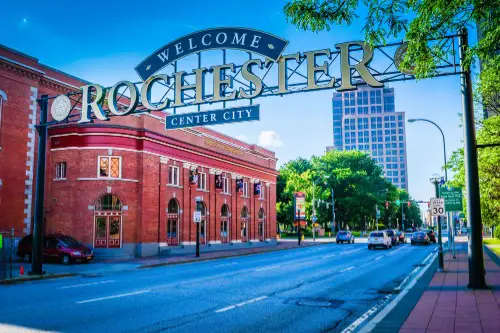
Rochester was once the home of major industrial and technological giants like Eastman Kodak and Xerox. At its peak, the city was a thriving center of innovation and manufacturing. However, as these companies outsourced jobs or shut down, Rochester’s economy began to crumble. The loss of major employers led to a steady population decline, and the city’s economic base continues to shrink.
Though there have been efforts to revive the city through tech incubators and cultural tourism, Rochester’s job market remains constrained. Many of the city’s neighborhoods suffer from disinvestment, with vacant homes and businesses lining the streets. The city’s infrastructure is also aging, making it difficult to attract new residents and businesses. Without a significant economic shift, Rochester’s downward trend may continue, with large parts of the city potentially turning into ghost towns by 2040.
13. Peoria, Illinois

Peoria was once a stronghold for manufacturing, especially for companies like Caterpillar Inc. However, the loss of manufacturing jobs in the 1980s and 1990s had a lasting impact. Although Caterpillar remains a significant employer in the region, the city has struggled to diversify its economy, and many of its manufacturing plants have either closed or moved elsewhere.
Peoria now faces a shrinking population, with many younger people leaving the city in search of better job opportunities. The city’s infrastructure is deteriorating, and its downtown is far from bustling. Like many other Midwestern cities, Peoria faces challenges with high crime rates and poverty, which only intensify the city’s struggles to retain its residents. Unless major investments are made to develop new industries and attract a younger workforce, Peoria could continue to shrink, and by 2040, could become a ghost town in the making.
14. Trenton, New Jersey
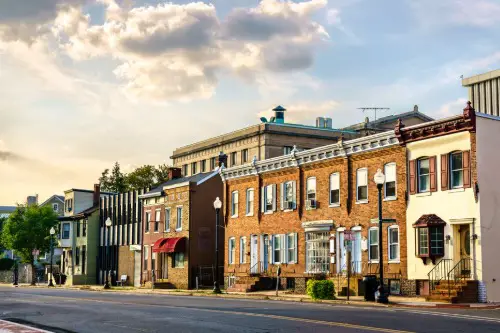
Trenton, the capital of New Jersey, once thrived with its proximity to Philadelphia and New York City, and its role as an industrial hub. However, much of its manufacturing base has evaporated, leaving the city vulnerable. The loss of jobs has led to a steady population decline, and the city now faces a host of social and economic problems, including high crime rates and poverty.
Trenton’s economy remains heavily reliant on government employment, and the city lacks the diversity of industries that could lead to long-term stability. The downtown area has seen some revitalization, but many neighborhoods are still plagued by abandoned homes and vacant lots. If Trenton doesn’t find a way to diversify its economy and retain its residents, it could very well face further population decline, edging closer to ghost town status by 2040.
15. Brownsville, Texas

Brownsville, located on the southernmost tip of Texas, has long been an economically challenged city. While it has some agricultural and trade connections, the region is heavily dependent on industries like oil and gas. As these industries have faced volatility and as the global economy shifts, Brownsville’s job market remains limited, which has contributed to its declining population.
The city also faces significant issues with poverty and educational attainment, which have led many young people to leave in search of better opportunities elsewhere. While the cost of living in Brownsville is lower than many other cities in the U.S., this has not been enough to stem the flow of people leaving for more prosperous areas. Without a serious shift in economic policy or the development of new industries, Brownsville risks becoming an area of further decline, making it one of the cities that could slide into ghost town status by 2040.


